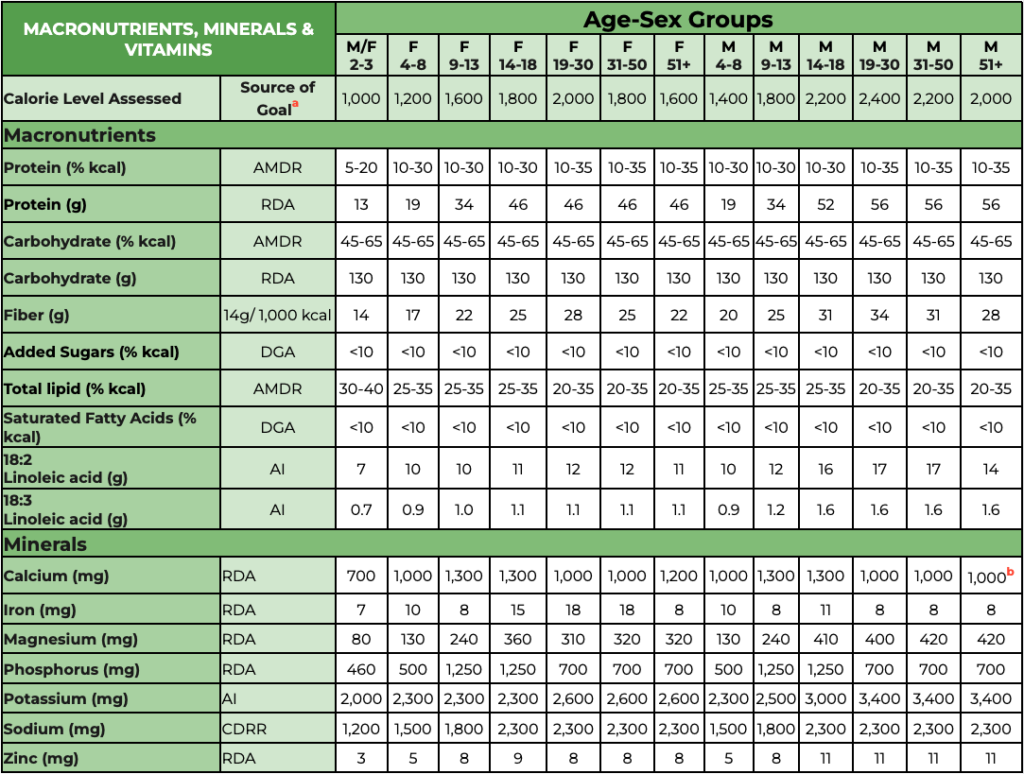Protein is a macronutrient essential to every cell in the human body. Favored by athletes and fitness enthusiasts, dietary protein is commonly idolized for its muscle-building benefits, but these large, complex molecules are critical for maintaining optimal health during growth and aging and controlling specific physiological processes such as growth, development, metabolism, and reproduction.
Research suggests that even though consumers generally have favorable perceptions of protein, their general knowledge about its benefits and dietary sources is relatively low. A 2019 survey by FMCG Gurus collected data from 20,000 consumers about their protein intake, which revealed that while 70% of consumers associate protein with general health and wellness, 51% admit they don’t know how much protein they’ve consumed in the last 24-hours, with 4 in 10 consumers expressing uncertainty about the purpose of protein in the body.1 Healthcare professionals are well-positioned to dispel myths, uncover truths, and provide general education about protein to help consumers make well informed decisions about their dietary intake. This includes taking important considerations into account such as cultural and other dietary preferences, activity level, age, and any medical conditions that may warrant a limit or increase in protein needs.
Physiological Roles and Functions of Protein
To understand the dietary needs of protein for individuals, it’s important to have a solid grasp on its physiological processes in the body. Once dietary protein is ingested, hydrochloric acid and enzymes called proteases break it down into smaller chains of amino acids, also known as the building blocks of protein. These amino acid chains eventually move from the stomach into the small intestine where the majority of protein digestion and absorption takes place. The small intestine is lined with cells called enterocytes which have fingerlike structures called microvilli. The amino acids and other peptides ultimately get absorbed through the enterocytes where peptides are further broken down into amino acids and move into the bloodstream. There, amino acids are used by cells to build other vital proteins and macro molecules, such as DNA. While there are 20 AAs, the body can only make 11 of them, leaving the remaining 9 to be referred to as “essential” AAs, which can only be consumed through the diet. The 9 essential AAs include histidine, isoleucine, leucine, lysine, methionine, phenylalanine, threonine, tryptophan, and valine. The body requires a specific combination of essential amino acids, obtained from foods, daily for internal functions such as to build and rebuild tissue and hormone regulation.2 For example, specific AAs, including methionine, are associated with the regulation of aging and metabolism. Muscles, organs, bones, skin, and many of the hormones in the body are also made from protein.
Protein performs essential functions throughout the body including the initiation and acceleration of chemical reactions, synthesizing and repairing DNA, transporting materials across cells, receiving and sending chemical signals, responding to stimuli and providing structural support.3 A towering body of research has also suggested protein to be effective for body-weight management as it promotes satiety, and enhancement of body composition as it decreases fat mass while preserving fat-free mass in both low calorie and standard calorie diets.4
Protein – How Much Is Enough?
Daily protein requirements are based on the current U.S. recommended dietary allowance (RDA) of 0.8 grams (g) per kilogram (kg) body weight per day. This is based on data for healthy individuals and considers the amount of protein needed to compensate for the daily loss of nitrogen, which is a fundamental component of amino acids. With this in mind, nitrogen inputs and losses can be used to study protein metabolism.5 However, multiple factors can impact an individual’s protein needs including type and level of physical activity, age, inflammation or other medical conditions which may warrant an increase or decrease in protein, and amount of fat-free mass which comprises of muscle, fluid, organs and bones.6
The 2020-2025 Dietary Guidelines for Americans (DGA), which provides recommendations on the RDA for the intake of nutrients and guidance on what to eat and drink to meet those needs, states that the average person get between 10 and 35 percent of their total calories from protein. Beyond this, there’s relatively little solid information on the ideal amount of protein in the diet or the healthiest target for calories contributed by protein. Some studies suggest that the amount of 0.8g/kg may not be sufficient for older adults, defined as age 65+, who typically need 1.0-1.5g/kg/day, which can induce improvements in glycemic control and muscle mass. In fact, studies suggest that higher protein intake, upwards of 1.0-1.5g/kg/day in older adults may result in favorable metabolic changes, and induce beneficial outcomes on glycemic markers due to factors such as satiety and lower post-prandial blood glucose.7 According to the PROT-AGE Study Group, to help older adults gain and regain lean body mass and function, the protein amount of 1.0-1.2g/kg/day is advised; and those engaging in endurance and resistance exercise; and/or have acute or chronic conditions, may benefit from a protein intake exceeding 1.2g/kg/day.8 However, individuals with kidney dysfunction (not on dialysis) typically need to limit protein intake. Athletes typically require higher amounts of protein, as well, due to increased physical activity. See the chart below for a general overview of daily nutritional goals for ages 2 to 50+ per the DGA.
Daily Nutritional Goals, Ages 2 and Older

a AI = Adequate Intake, CDRR = Chronic Disease Risk Reduction Level, DGA = Dietary Guidelines for Americans, 2020-2025 , RDA = Recommended Dietary Allowance.
Sources: Institute of Medicine. Dietary Reference Intakes: The Essential Guide to Nutrient Requirements. Washington, DC: The National Academies Press; 2006. Institute of Medicine. Dietary Reference Intakes for Calcium and Vitamin D. Washington, DC: The National Academies Press; 2011. National Academies of Sciences, Engineering, and Medicine. Dietary Reference Intakes for Sodium and Potassium. Washington, DC: The National Academies Press; 2019.
Unlike other macronutrients, fat and carbohydrates, the body does not store protein, which is why it’s important to consume adequate amounts daily. Emerging research suggests that spreading protein intake throughout the day and more evenly with each meal and snack, can help the body to use protein more efficiently and further stimulate muscle synthesis.9 One rule of thumb is to have a protein food with each meal and snack, accompanying other foods such as whole grains, fruit, vegetables, and healthy fats. Research suggests that a high protein breakfast, containing 30% protein, may improve blood sugar control and insulin levels, supports weight loss by increasing muscle mass, increases satiety hormones, and reduces the desire to snack later at night.10
Dietary Protein Sources: What Every Healthcare Professional Should Know
Protein is a vital part of the diet, with sources including, but not limited to, eggs, meat, seafood, legumes, nuts, and seeds. Animal-based protein sources, such as meat and eggs, are best known as complete protein sources, but there are many complete vegan and vegetarian sources of protein including, but not limited to, tempeh, buckwheat, quinoa, edamame, chia seeds, hemp seeds, tofu, pea protein, amaranth and spirulina. For a convenient option of high-quality plant-based protein, Orgain, offers protein powders and ready-to-drink shakes that provide a complete source of protein.
With the world accelerating toward sustainable approaches to eating, there has been a shift in demand for alternative protein sources. According to a survey conducted by the University of Minnesota’s College of Food, Agricultural and Natural Resource Sciences (CFANS), 80 percent of U.S. adult consumers today prefer animal-based protein, but plant protein is quickly gaining popularity with 31 percent of consumers saying they will eat more plant protein over the next five years.11 While this shift toward plant protein is positive, it’s important for healthcare professionals to educate consumers on the different types of plant protein sources and that not all are created equal. For example, highly processed plant protein products may include other ingredients that raise the total sodium and fat content. With this said, understanding how to read and interpret nutrition labels is important.
Last, but not least, it’s important to note that millions of people worldwide, especially young children, don’t get enough protein due to food insecurity. The effects of protein deficiency and malnutrition range in severity from growth failure and loss of muscle mass to decreased immunity and weakening of the heart and respiratory system. For those experiencing food insecurity, healthcare professionals can suggest low-cost protein sources, including bulk options whenever possible, including chicken breast, canned tuna and beans, lentils, oats, brown rice, whole wheat bread and eggs.
Learn More with Orgain
With a product portfolio spanning nutrient-rich protein bars to powders and ready-to-drink shakes, Orgain offers a wide range of high-quality plant-based and dairy-based protein products to help meet protein needs for adults and children. Orgain products, except for its Collagen Peptides and Keto Collagen powders, offer a complete source of protein as they contain all 9 essential amino acids.
From pea protein to collagen, learn about the different types of protein powder options and their benefits in our science-based brief from January 20, 2021, Powering Up With Protein Powder.
- Hughes, M. (2019, August 15). Do not overestimate consumer awareness about protein. New Food Magazine. Retrieved January 30, 2023, from https://www.newfoodmagazine.com/article/90862/not-overestimate-consumer-awareness-protein/
- Kitada, M., Ogura, Y., Monno, I., & Koya, D. (2019, May). The impact of dietary protein intake on longevity and Metabolic Health. EBioMedicine. Retrieved January 30, 2023, from https://www.ncbi.nlm.nih.gov/pmc/articles/PMC6562018/
- Sudhakararao, G., priyadarsini, K. A., Kiran, G., Karunakar, P., & Chegu, K. (2019). Physiological role of proteins and their functions in human body. International Journal of Pharma Research and Health Sciences, 7(1), 2874–78. https://doi.org/10.21276/ijprhs.2019.01.02
- Moon, J., & Koh, G. (2020, September 30). Clinical evidence and mechanisms of high-protein diet-induced weight loss. Journal of obesity & metabolic syndrome. Retrieved January 30, 2023, from https://www.ncbi.nlm.nih.gov/pmc/articles/PMC7539343/
- Dickerson, R. N. (2016, April 18). Nitrogen balance and protein requirements for critically ill older patients. Nutrients. Retrieved February 8, 2023, from https://www.ncbi.nlm.nih.gov/pmc/articles/PMC4848694/
- Dekker, I. M., van Rijssen, N. M., Verreijen, A., Weijs, P. J. M., de Boer, W. B. (E., Terpstra, D., & Kruizenga, H. M. (2022). Calculation of protein requirements; a comparison of calculations based on bodyweight and Fat Free Mass. Clinical Nutrition ESPEN, 48, 378–385. https://doi.org/10.1016/j.clnesp.2022.01.014
- Beaudry, K. M., & Devries, M. C. (2019, August 13). Nutritional strategies to combat type 2 diabetes in aging adults: The importance of protein. Frontiers. Retrieved January 30, 2023, from https://www.frontiersin.org/articles/10.3389/fnut.2019.00138/full
- Bauer, J., Biolo, G., Cederholm, T., Cesari, M., Cruz-Jentoft, A. J., Morley, J. E., Phillips, S., Sieber, C., Stehle, P., Teta, D., Visvanathan, R., & Volpi, E. (2013). Evidence-based recommendations for optimal dietary protein intake in older people: A position paper from the Prot-Age Study Group. Journal of the American Medical Directors Association, 14(8), 542–559. https://doi.org/10.1016/j.jamda.2013.05.021
- Schoenfeld, B. J., & Aragon, A. A. (2018, February 27). How much protein can the body use in a single meal for muscle-building? implications for daily protein distribution – journal of the International Society of Sports Nutrition. BioMed Central. Retrieved January 30, 2023, from https://jissn.biomedcentral.com/articles/10.1186/s12970-018-0215-1
- Hawley, A. (2018, December 17). Protein, its what’s for breakfast. American Society for Nutrition. Retrieved February 8, 2023, from https://nutrition.org/protein-its-whats-for-breakfast/
- Americans pick their proteins: College of food, Agricultural and Natural Resource Sciences. University of Minnesota College of Food, Agricultural and Natural Resource Sciences. (2022, June 15). Retrieved February 2, 2023, from https://cfans.umn.edu/news/americans-pick-their-proteins



